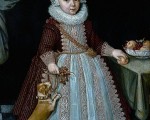
Tudor people were just like us, they loved their animals, but how much do you know about the pets of the Tudors? Test your knowledge with this fun quiz.
[Read More...]
Tudor people were just like us, they loved their animals, but how much do you know about the pets of the Tudors? Test your knowledge with this fun quiz.
[Read More...]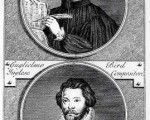
It is thought that Thomas Tallis, alternatively spelled “Tallys,” could have been born on 30 January 1505, though it is not known for certain. What is known is that Tallis did not die until 1585, and that he contributed greatly to the development and composition of English choral music. Not much is known about Tallis’s early life. There are no records of his education or really of his whereabouts until Tallis is well into his 20s. There is also no contemporary portrait of him, with the only existing portrait having been executed sometime after his death.
[Read More...]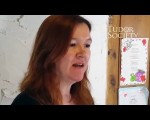
For this week’s Claire Chats I wanted to share with you a video I’ve just made for my “Tudor Cooking with Claire” series. I love ginger and so was interested to find various mentions of “ginger bread” in medieval and Tudor recipe books and to find that it really was ‘gingered bread’.
[Read More...]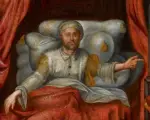
As today is the anniversary of the death of King Henry VIII in 1547, Beth von Staats, Tudor Life magazine contributor and author of Thomas Cranmer in a Nutshell, has written a very moving piece of fiction about Henry VIII’s final days from the viewpoint of Thomas Cranmer. I do hope you enjoy it.
It is time for the Lord to act; they have frustrated Your law. ~~~ Psalm 119:126
[Read More...]
It’s our sex edition … and there are lots of things to discover within February’s Tudor Life magazine. Dare you read on? (Actually you won’t be shocked, but you will learn a lot!)
[Read More...]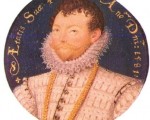
On the 27th January 1596, Sir Francis Drake, explorer, sea captain and pirate, died of dysentery in Portobelo harbour, Panama. When he realised that death was near, he asked to be dressed in his armour. Although he requested burial on land, Drake was buried at sea in a lead coffin, along with his second cousin, Admiral Sir John Hawkins.
Drake made his first voyage to the New World at the age of around twenty-three, with Hawkins, whose family owned a fleet of ships based in Plymouth. Another voyage saw the fleet trapped by Spaniards in the Mexican port of San Juan de Ulua in 1568. Fortunately, the two men managed to escape, but they lost all but two of their fleet. In 1570 and 1571, Drake undertook two trading voyages to the West Indies, and in 1572 took two ships on a marauding campaign against the Caribbean’s Spanish ports. Drake was able to capture the port of Nombre de Dios and return to England, his ships laden with Spanish booty. In 1573 Drake attacked a mule train with the help of Guillaume Le Testu, the French buccaneer, capturing around 20 tons of gold and silver.
[Read More...]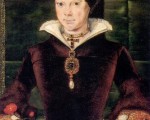
ary I became queen in 1553 and although the English people had been happy for her to become queen, some noblemen became worried about her plans to marry Philip II of Spain and the religious changes her reign was bringing. A group of men including Thomas Wyatt the Younger, Henry Grey (Duke of Suffolk and father of Lady Jane Grey), Sir Peter Carew, Sir Edward Rogers, Sir Edward Warner, Sir William Pickering, Sir Nicholas Throckmorton, Sir James Croft, Sir George Harper, Nicholas Arnold, William Thomas and William Winter decided that a military coup might be the only way to prevent Mary’s marriage and planned a series of uprisings with the aim of deposing Mary I and replacing her with her half-sister Elizabeth, who would marry Edward Courtenay, Earl of Devon.
[Read More...]
Today’s quiz is a bit easier than normal, seeing as you have a 50/50 chance of getting each question right, but can I still catch you out? Did these events take place in the Tudor period or not? Have fun!
[Read More...]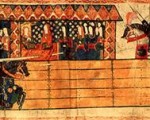
]During a jousting event on this day in history, 24th January 1536, Henry VIII fell from his horse and in full armour was crushed under the weight of the animal. Eustace Chapuys, ambassador to Charles V wrote:
“On the eve of the Conversion of St. Paul, the King being mounted on a great horse to run at the lists, both fell so heavily that every one thought it a miracle he was not killed.”
Many articles and even whole books have been written about this fateful event and how such a traumatic experience, both physically and psychologically, may have permanently changed the King’s mental stability. This article, however, instead explores a little of the history of the joust and why Henry VIII was such a fervent lover of the sport.
[Read More...]
For anyone who wants to re-cap the fun or if you missed the chat, here is the transcript of the session we had with Kyra Kramer last night.
[Read More...]
In today’s Claire Chats I look at Richard Edwards: who he was and how he has become linked to Henry VIII.
[Read More...]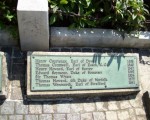
On 22nd January 1552, between 8 and 9 o’clock in the morning, Edward Seymour, Duke of Somerset, former Lord Protector and brother of the late Queen Jane Seymour, was executed on Tower Hill. He was laid to rest in the Chapel of St Peter ad Vincula at the Tower of London and records show that he was buried next to Queen Anne Boleyn in the chancel area.
[Read More...]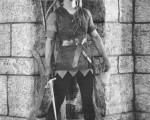
On 18th January 1510, Henry VIII and twelve of his men disguised themselves as outlaws, or Robin Hood and his merry men, and surprised Queen Catherine and her ladies. Chronicler Edward Hall records this event:
[Read More...]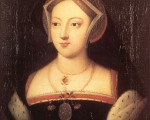
How much do you know about those linked romantically to the monarchs of the Plantagenet, Tudor and Stuart dynasties? Test your knowledge with this fun quiz.
[Read More...]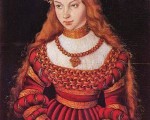
Sibylle von Kleve was born on 17 January 1512 and eventually became older sister to Anna von Kleve, more commonly known as Anne of Cleves or Henry VIII’s fourth wife, in 1515. Sibylle, the eldest of Maria von Julich-Berg’s children with Duke Johann von Kleve, was elevated to the station of Electress Consort through her marriage to Johann Friedrich I, the Elector of Saxony, in 1527.
As Electress of Saxony, Sibylle enjoyed a fruitful marriage with Johann Friedrich and had four sons, three of whom survived to adulthood. Sibylle was known as a great beauty, as can be seen from her engagement portrait by Lucas Cranach the Elder from 1526 (left hand portrait). Her long, golden-brown hair is loose and flowing about her shoulders. Lucas Cranach the Elder and his workshop would go on to produce many portraits of Sibylle and her family, including one finished in 1531, when Sibylle was 29. In the 1531 portrait of Sibylle (right hand portrait), we see that she likely plucked back her hairline, as was fashionable in the period as a high forehead showed that a woman was of noble bearing and intelligent.
[Read More...]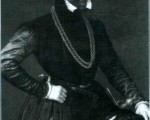
In today’s Claire Chats, I look at the life of Thomas Stukeley (Stucley), the claim that he was an illegitimate son of Henry VIII and what evidence there is to back up that claim.
[Read More...]
Kyra Kramer will be in the Chatroom on Friday 22nd January at 11pm UK time to discuss Henry VIII and his health issues. Don’t miss it.
[Read More...]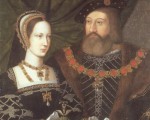
On 14th January 1515, Charles Brandon, Duke of Suffolk, was sent to France under orders from Henry VIII to bring back Henry’s sister, the newly widowed Mary Tudor. Brandon would see to Mary’s safe return, but she would not be a widow on her return but, instead, a newly married woman.
[Read More...]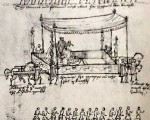
On 14th January 1559, the eve of her coronation, Queen Elizabeth I processed from the Tower of London to Westminster in a cloth of gold covered litter carried by two mules.
Here are the main parts and pageants of the procession from Fenchurch onwards:
[Read More...]
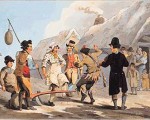
Plough Monday was the first Monday after 6th January and was the day on which things would return to normal after the Twelve Days of Christmas and people would return to work. It was also the first day of the new agricultural year and 16th century poet and farmer Thomas Tusser wrote:
Plough Monday, next after that Twelfth tide is past
Bids out with the plough, the worst husband is last.
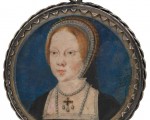
How much do you know about the artists and art of the Tudor court? Test your knowledge with this fun quiz.
[Read More...]
In today’s Claire Chats I look at the evidence regarding Henry VIII’s claims that Anne of Cleves was unattractive and the origin of the “Flanders Mare” label.
[Read More...]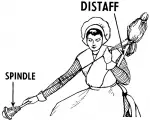
If you’ve read this month’s Tudor Life magazine then you will know that today is St Distaff’s Day. Never heard of it? Well, neither had I until I read Steve Roud’s The English Year, a wonderful book on all the feast days and traditions celebrated throughout the English calendar year.
[Read More...]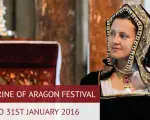
Every year, Peterborough Cathedral, the resting place of Catherine of Aragon, first wife of Henry VIII, put on a programme of events around the anniversary of her burial (29th January) known as the Katharine of Aragon Festival to commemorate her life.
[Read More...]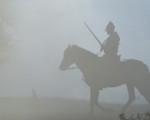
Just to let you know that a four-part series on the Wars of the Roses starts on the UK’s Channel 5 at 8pm on Thursday 7th January 2015 – Britain’s Bloody Crown.
[Read More...]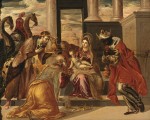
I’ve noticed lots of comments from people on social media saying how they’ve taken down their Christmas trees and decorations and got back to normal. For many people around the world today, the Christmas period was over with New Year, but Christmas in the Tudor period ran for twelve days, Christmas Day to Epiphany on 6th January, the feast day which was a commemoration and celebration of the visit of the Magi to the Christ child.
Twelfth Night and Epiphany were marked with feasting and entertainment. But when exactly is “Twelfth Night”? Is it 5th or 6th January? There isn’t really any agreement over this and an article in The Guardian newspaper examined this question:
[Read More...]